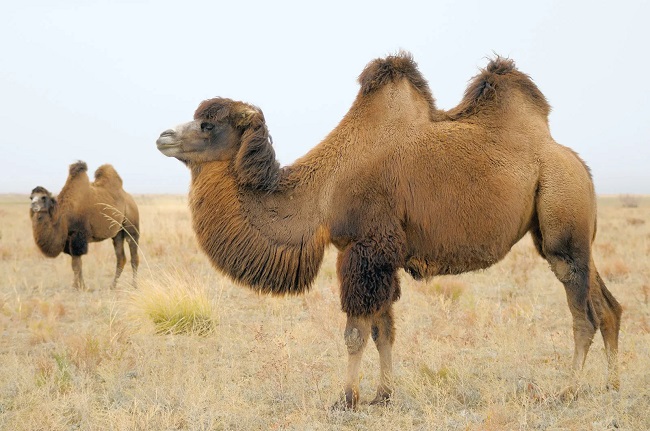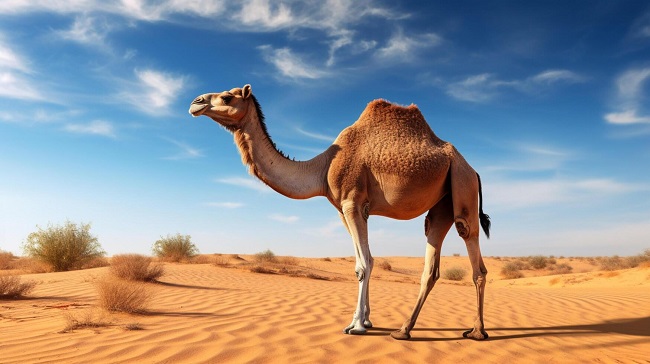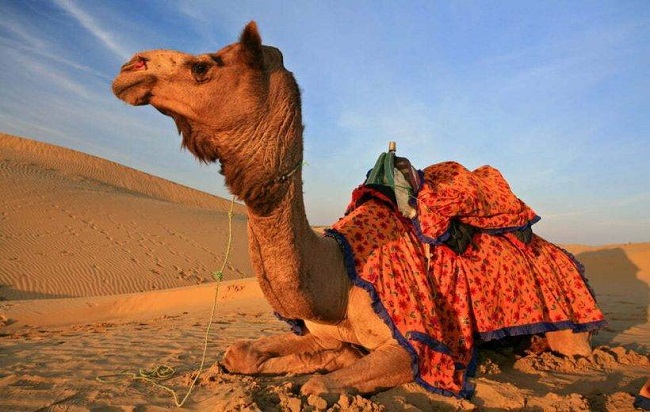Camels are remarkable animals known for their adaptability to harsh environments and their unique physical characteristics.
These resilient creatures have been crucial to human survival in arid regions for centuries, providing transportation, food, and other resources.
This article explores the top 35 types of camels in the world, highlighting their unique traits, habitats, and contributions to human societies.
Exploring the World of Camels: Top 35 Types of Camels Around the Globe
1. Dromedary Camel (Camelus dromedarius)
The Dromedary Camel, also known as the Arabian Camel, is the most common camel species, characterized by a single hump. These camels are native to the Middle East and the Horn of Africa, thriving in hot, arid climates.
Dromedary Camels are renowned for their endurance and ability to travel long distances without water, making them indispensable in desert transportation and trade.
2. Bactrian Camel (Camelus bactrianus)

The Bactrian Camel, distinguished by its two humps, is native to the steppes of Central Asia. These camels are well-adapted to cold, harsh environments and can carry heavy loads over long distances.
Bactrian Camels have been essential to trade routes like the Silk Road, providing transportation and carrying goods across vast, rugged terrains.
3. Wild Bactrian Camel (Camelus ferus)
The Wild Bactrian Camel, a critically endangered species, is found in the remote deserts of China and Mongolia. Unlike their domesticated counterparts, Wild Bactrian Camels have adapted to survive in extreme conditions with minimal water. Conservation efforts are crucial to protect these rare camels and their unique genetic traits.
4. Hybrid Camel
Hybrid Camels, also known as Tulus or Bukhts, result from crossbreeding between Dromedary and Bactrian camels. These hybrids combine the endurance of Dromedaries and the strength of Bactrians, making them highly valued for heavy transport and work in diverse climates. They are commonly found in regions where both parent species coexist.
5. Turkmen Camel (Arvana)
The Turkmen Camel, a breed of the Dromedary Camel, is native to Turkmenistan and is known for its speed and endurance. These camels are prized for their ability to travel long distances quickly, making them ideal for racing and transportation in desert environments. The Arvana is also valued for its milk and meat.
6. Kharai Camel
The Kharai Camel, native to the coastal regions of India and Pakistan, is unique for its ability to swim and adapt to mangrove ecosystems. These camels can swim for long distances to reach grazing areas on islands and are vital to the livelihoods of coastal communities. The Kharai Camel is a testament to the adaptability and resilience of camels.
7. Kazakh Camel
The Kazakh Camel, primarily found in Kazakhstan, is a breed of the Bactrian Camel. These camels are known for their robust build and thick fur, which provides insulation against extreme cold. Kazakh Camels have been integral to the nomadic cultures of Central Asia, providing transportation, milk, and wool.
8. Tulu Camel
The Tulu Camel, a hybrid breed found in Turkey, is known for its strength and endurance. These camels are used primarily for carrying heavy loads and agricultural work. The Tulu Camel is a result of crossbreeding between Dromedary and Bactrian camels, combining the best traits of both species.
9. Somali Camel
The Somali Camel, a breed of the Dromedary Camel, is native to the Horn of Africa. These camels are highly valued for their milk production, which is a crucial part of the diet in many Somali communities. Somali Camels are well-adapted to arid environments and can travel long distances in search of water and grazing.
10. Australian Feral Camel
The Australian Feral Camel, descended from camels imported during the 19th century for transportation and exploration, is now found in the wild across Australia. These camels have adapted to the Australian outback and have become an integral part of the ecosystem. They are managed through various programs to balance their impact on the environment.
11. Black Camel (Sawhili)
The Black Camel, also known as the Sawhili Camel, is primarily found in Sudan and parts of North Africa. These camels are known for their distinctive dark coats and are highly valued for their resilience and endurance. They are used for transportation, meat, and milk production in arid regions.
12. Nubian Camel
The Nubian Camel, a breed of the Dromedary Camel, is native to the Nubian region of Sudan and Egypt. These camels are known for their strong build and ability to withstand extreme desert conditions. Nubian Camels are used for transportation, agricultural work, and milk production.
13. Rajasthani Camel (Marwari)
The Rajasthani Camel, also known as the Marwari Camel, is found in the Rajasthan region of India. These camels are prized for their hardiness and endurance, making them ideal for long-distance travel in the Thar Desert. Rajasthani Camels are also used in traditional camel festivals and are important for the local economy.
14. Ethiopian Camel
The Ethiopian Camel, a breed of the Dromedary Camel, is native to Ethiopia and other parts of the Horn of Africa. These camels are known for their strong build and ability to thrive in arid environments. Ethiopian Camels are vital for transportation, agricultural work, and milk production.
15. Somali White Camel
The Somali White Camel, a breed of the Dromedary Camel, is known for its distinctive white coat. These camels are highly valued in Somali culture and are used for milk production, transportation, and ceremonial purposes. Somali White Camels are well-adapted to the harsh desert conditions of the Horn of Africa.
16. Qatari Camel
The Qatari Camel, a breed of the Dromedary Camel, is native to Qatar and the Arabian Peninsula. These camels are known for their speed and endurance, making them popular for camel racing. Qatari Camels are also used for transportation and milk production, playing a significant role in the cultural heritage of the region.
17. Egyptian Camel
The Egyptian Camel, a breed of the Dromedary Camel, is found in Egypt and surrounding regions. These camels are known for their strong build and ability to withstand extreme desert conditions. Egyptian Camels are used for transportation, agricultural work, and tourism, particularly in regions near historical sites.
18. Afghan Camel
The Afghan Camel, primarily a breed of the Bactrian Camel, is found in Afghanistan and surrounding Central Asian countries. These camels are known for their resilience in cold climates and their ability to carry heavy loads. Afghan Camels are essential for trade and transportation in the mountainous regions of Central Asia.
19. Pakistani Camel
The Pakistani Camel, a breed of the Dromedary Camel, is found in Pakistan and neighboring regions. These camels are known for their endurance and ability to thrive in arid environments. Pakistani Camels are used for transportation, agricultural work, and milk production, contributing to the livelihoods of many rural communities.
20. Libyan Camel

The Libyan Camel, a breed of the Dromedary Camel, is native to Libya and the surrounding Sahara Desert. These camels are well-adapted to the harsh desert conditions and are used for transportation, meat, and milk production. Libyan Camels play a crucial role in the nomadic cultures of the Sahara.
21. Kazakh White Camel
The Kazakh White Camel, primarily a breed of the Bactrian Camel, is found in Kazakhstan and neighboring Central Asian countries. These camels are known for their striking white fur and robust build.
They are highly valued for their endurance and ability to carry heavy loads over long distances. Kazakh White Camels are integral to nomadic cultures and are used for transportation, milk, and wool.
22. Chadian Camel
The Chadian Camel, a breed of the Dromedary Camel, is native to Chad and other parts of Central Africa. These camels are well-adapted to the arid climate and are used for transportation, agricultural work, and milk production. Chadian Camels are crucial for the survival and economy of nomadic tribes in the region.
23. Persian Camel
The Persian Camel, found in Iran and surrounding areas, is a breed of the Dromedary Camel. These camels are known for their strength and endurance, making them ideal for long-distance travel and heavy transport. Persian Camels have historically played a significant role in trade and transportation across the Persian Gulf and the Silk Road.
24. Mongolian Camel
The Mongolian Camel, primarily a breed of the Bactrian Camel, is native to Mongolia and the Gobi Desert. These camels are known for their thick fur and ability to withstand extreme cold and heat. Mongolian Camels are used for transportation, milk, and wool, and are an integral part of Mongolian nomadic culture.
25. Turkoman Camel
The Turkoman Camel, found in Turkmenistan and surrounding areas, is a breed of the Dromedary Camel. These camels are known for their speed and agility, making them popular for racing and transportation. Turkoman Camels are also used for milk and meat production and play a significant role in the cultural heritage of Turkmenistan.
26. Malaysian Camel
The Malaysian Camel, though not native to Malaysia, has been imported for agricultural and tourism purposes. These camels, primarily Dromedaries, are adapted to tropical climates and are used for rides and transport in tourist areas. They contribute to the local economy by attracting tourists and providing unique experiences.
27. Baluchistan Camel
The Baluchistan Camel, native to the Baluchistan region of Pakistan and Iran, is a breed of the Dromedary Camel. These camels are well-adapted to the harsh desert conditions and are used for transportation, agricultural work, and milk production. Baluchistan Camels are vital for the livelihood of nomadic tribes in the region.
28. Kuwaiti Camel
The Kuwaiti Camel, a breed of the Dromedary Camel, is native to Kuwait and the Arabian Peninsula. These camels are known for their endurance and speed, making them popular for racing and transportation. Kuwaiti Camels are also used for milk production and play a significant role in the cultural and economic life of the region.
29. Omani Camel
The Omani Camel, found in Oman and surrounding areas, is a breed of the Dromedary Camel. These camels are prized for their strength and endurance, making them ideal for long-distance travel and racing. Omani Camels are also used for milk and meat production and are integral to the traditional Bedouin lifestyle.
30. Kharai Camel
The Kharai Camel, native to the coastal regions of Gujarat, India, is unique for its ability to swim and adapt to mangrove ecosystems.
These camels can swim for long distances to reach grazing areas on islands and are vital to the livelihoods of coastal communities. The Kharai Camel is a testament to the adaptability and resilience of camels in diverse environments.
31. Afghan Bactrian Camel
The Afghan Bactrian Camel, primarily found in Afghanistan and neighboring Central Asian countries, is known for its ability to thrive in harsh, cold climates. These camels have thick fur, which provides insulation against extreme temperatures.
Afghan Bactrian Camels are used for heavy transport and play a significant role in the traditional nomadic lifestyle, providing milk, meat, and wool.
32. Moroccan Camel
The Moroccan Camel, a breed of the Dromedary Camel, is native to Morocco and the Saharan regions. These camels are well-adapted to the hot, dry desert environment and are used for transportation, agricultural work, and milk production.

Moroccan Camels are essential for the livelihood of nomadic tribes and are also used in tourism, offering camel rides to visitors exploring the Sahara.
33. Eritrean Camel
The Eritrean Camel, a breed of the Dromedary Camel, is native to Eritrea and the Horn of Africa. These camels are known for their endurance and ability to survive in arid climates with minimal water. Eritrean Camels are used for transportation, agricultural work, and milk production, playing a crucial role in the economy and daily life of rural communities.
34. Qashqai Camel
The Qashqai Camel, found in Iran, is a breed of the Dromedary Camel known for its strength and endurance. These camels are integral to the Qashqai nomadic tribes, providing transportation, milk, and meat.
They are well-adapted to the mountainous and arid regions of Iran, making them invaluable for long-distance travel and heavy load carrying.
35. Berber Camel
The Berber Camel, native to North Africa, particularly in regions inhabited by Berber tribes, is a breed of the Dromedary Camel. These camels are known for their resilience and ability to thrive in the harsh conditions of the Sahara Desert.
Berber Camels are used for transportation, milk, and meat, and they play a significant role in the cultural and economic life of Berber communities.
Conclusion
These top 35 types of camels highlight the incredible adaptability and resilience of these remarkable animals. From the single-humped Dromedary Camel to the critically endangered Wild Bactrian Camel, each species and breed plays a unique role in their respective environments and human societies.
Understanding and appreciating these camels can help us recognize their value and the importance of their conservation.
By respecting and protecting their habitats, we can ensure that these remarkable creatures continue to thrive and support the communities that depend on them.



